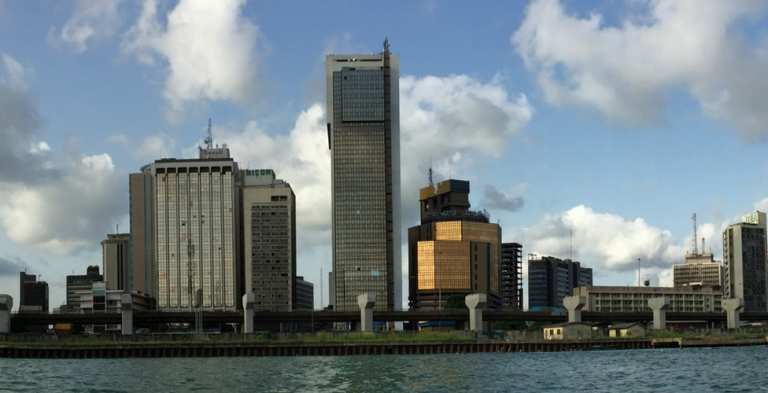
The existence of the Internet has improved interactions among people, businesses and governments on Internet-enabled platforms through various communication elements such as emoticons and Hashtag. However, many users of these elements do not know the histories and understand the meanings of the elements.
For instance, information has it that Hashtag emanates from the city of Hastings, located in the South East of the United Kingdom. In the 12th century, the city is known for her flourished fishing market. “Fishermen from the city fished in the North Sea off East Anglia and they sold much of their catch in Great Yarmouth.” How does the Hastings connect with Hashtag? The answer lies with the Battle of Hastings in which Harold II, the King of the city, fought with the Norman forces of William in 1066, to secure his province.
The Battle of Hastings and Hashtag as Digital Marketing Tactic
Register for Tekedia Mini-MBA edition 19 (Feb 9 – May 2, 2026): big discounts for early bird.
Tekedia AI in Business Masterclass opens registrations.
Join Tekedia Capital Syndicate and co-invest in great global startups.
Register for Tekedia AI Lab: From Technical Design to Deployment (next edition begins Jan 24 2026).
King Harold lost the battle to William. Harold was killed by an arrow shot into his eye. Existing information indicates that the battle was fought on Senlac Hill, seven miles from Hastings, England.
From this battle, the current #tag emerges to depict how the arrow shot to the King Harold penetrated his eye and the place of it in attracting people’s attention to contents on digital platforms for maximum reactions. Chris Messina, a social technology expert, has largely been credited to have developed the first Hashtag.
The element has been created and used by individuals and organisations to advance their brands and establishments within customer or audience journey of attention, interest, desire and action. While using the element, analysis reveals that users still mainly employ fear, humor, logical and bandwagon appeals in constructing specific words and phrases that accompany it. Digital marketers of Facilities Management companies (FM) in Nigeria are not exempted from this tactic.
How Alpha Mead, Maxi-Migold Are Using the Hashtag
In the previous analysis, the two companies’ posts on FM training were examined. The insights from the analysis offer better marketing practices. Beyond message construction for various FM training courses, it is highly imperative to understand the place of Hashtag in attracting prospective trainees.
Based on the available data, the two companies’ patterns of Hashtag usage include training, country, growth, company and industry specific at the expense of Like-hunch pattern which has been described as a most appropriate Hashtag type when it is essential to gain “Likes and comments” tractions from the followers.
Within the training category, #training, #corporatetraining, #coaching dominated the posts between July 1 and August 12, 2019. For the country classification, #Ghana is employed mostly. #valuableskills and #certifications were some of the hashtags used within the growth category. In order to engage professionals on the LinkedIn, the two companies predominantly used #propertymanagers and #facilitymanagers, while #maxmigold, #maxmigoldltd #AlphaMeadTraining and #AMTC were the toast of the marketers within company category.
Analysis suggests that these were employed with the strategic intent of improving the visibility of the companies on the LinkedIn. The need to align with the social trends led to the use of #throwback and #throwbackthursday. The data also indicate #MotivationMonday was equally used to encourage followers towards being productive during each week of the period of the analysis. The intent of advancing the Facilities Management industry motivated the marketers to use #FacilitiesManagement and #construction during the period.

In all, 73 hashtags were used by the companies. Over 79% of this figure constituted non-invented, indicating the use of general hashtages. Only 20.54% of the figure was invented by the companies’ marketers. Since hashtags are being used to move prospective trainees from one place to another within the digital platforms. The expectation is that these hashtags were clicked by the followers for more information or understanding of the messages posted by the companies.
The 73 hashtags led to 162,066,478,829 average results on Google Search, 36.55107143 average time of loading the results for the hashtags, 161,471,897 average followers. This implies that two companies had a significant number of people to reach with the employed hashtags. Analysis further shows that #work was the hashtag with the highest number of contents (25,270,000,000) on Google Search Engine, #careers had the maximum time of 0.88 seconds for loading associated with the existing results (contents) on the search engine. #innovation had over 37 million followers. This is the maximum followers found for the 73 hashtags used by the companies.
Comparing these results with the dominant hashtags used by the companies, it is obvious that the used hashtags did not command significant attention. For instance, 4 contents were only discovered for #MeetTheFM, while no followers were found for #alphamead, #certifiedtraining, #enhancingcapacity, #MakingRealDifference, #AMTC, #happynewmonth, #August, #certifiedtrainingcentre, #AlphaMeadTraining, #FacilitiesManagementTraining, #professionaltraining, #professionalcourse, #CertifiedCourse, #gbs4, #maxmigold, #fmmc, #maxmigoldltd, #givingbackseries4, #changelives, #maxmidweeknugetts, #MeetTheFM, #toplevel, #valuableskills, #professionalcareer and #paidtraining. This signifies that the messages associated with these hashtags failed to get the followers and other people’s attention during the period.

In the future engagement, marketers need to popularize invented hashtags, most importantly those that connect with the companies’ brand names and specific training courses. This is important because analysis further suggests a strong connection between the loading time of searching for additional information using the dominant hashtags and number of existing contents. It is also desirable to use words and phrases that resonate with the graphical contents along with hashtag symbol (#) because analysis reveals only 14.6% of the dominant hashtags connection with the visuals employed during the period.

The Movement of the Messages on Visuals/Pictures with the Hashtags
Source: Companies’ LinkedIn Pages, Infoprations Analysis, 2019



